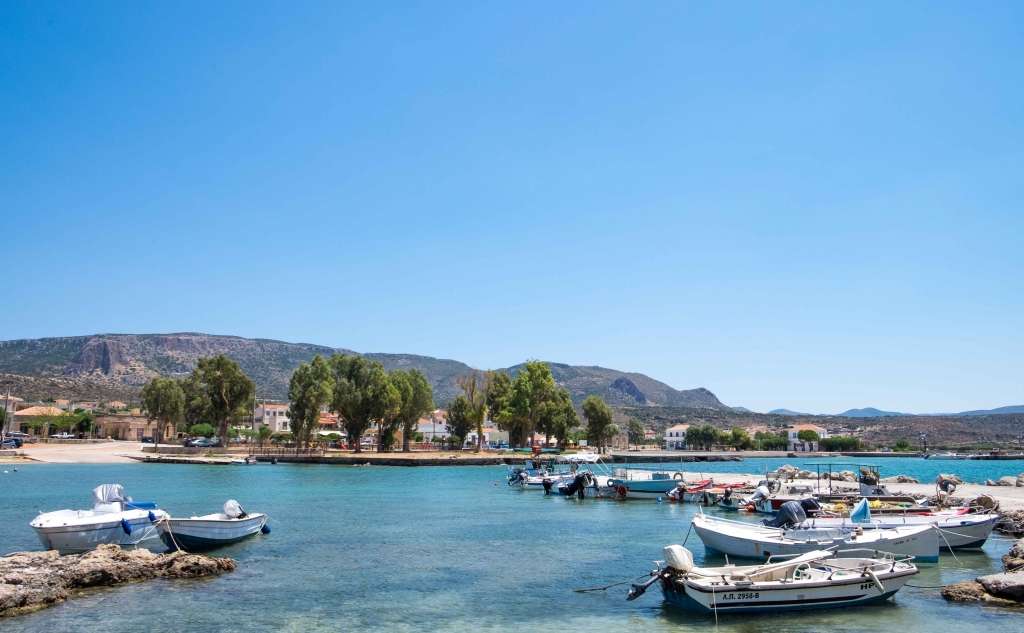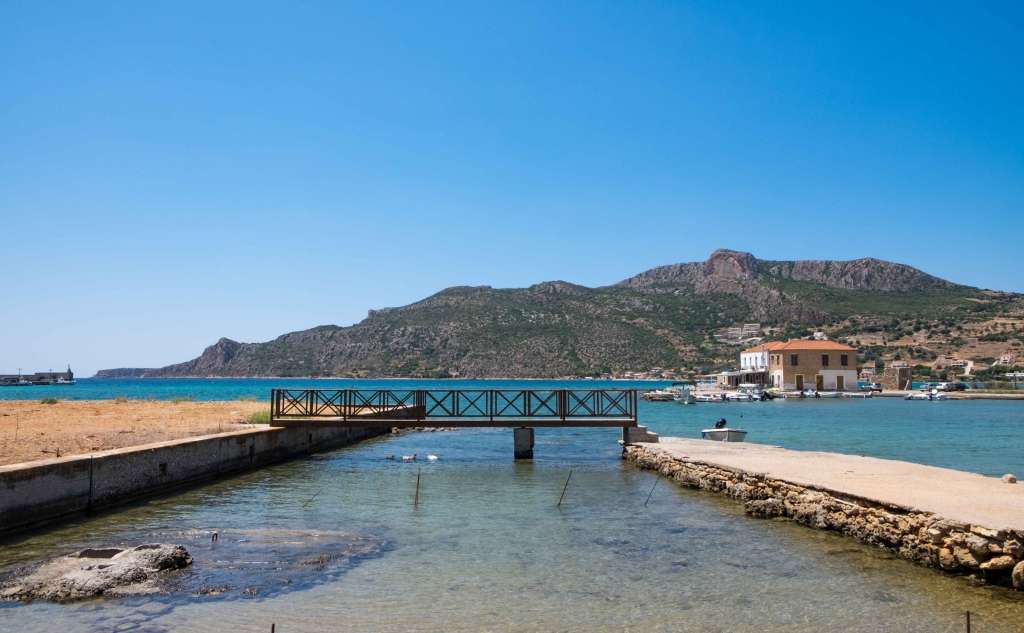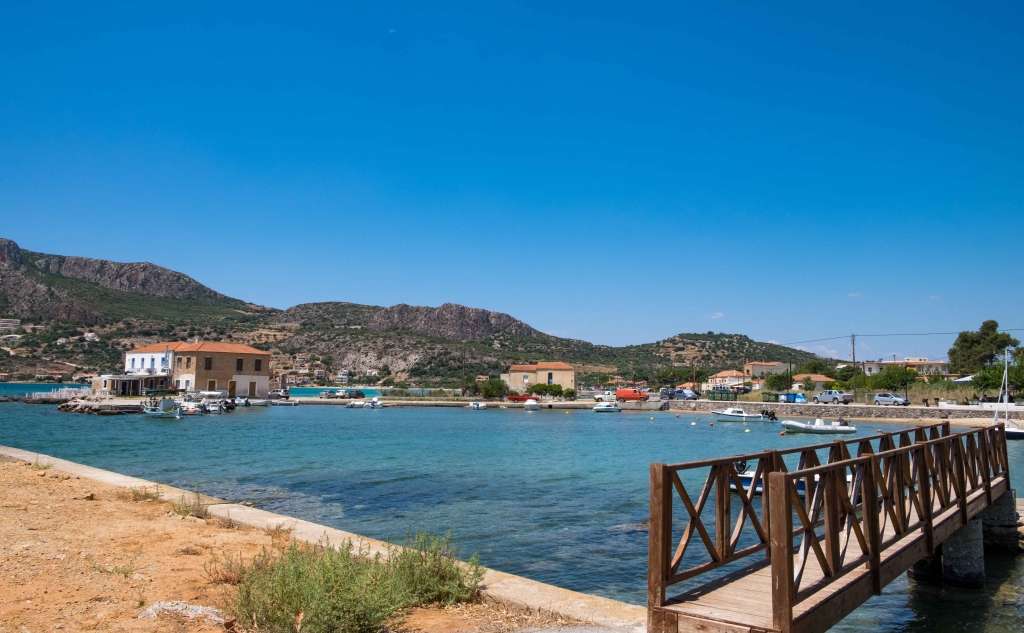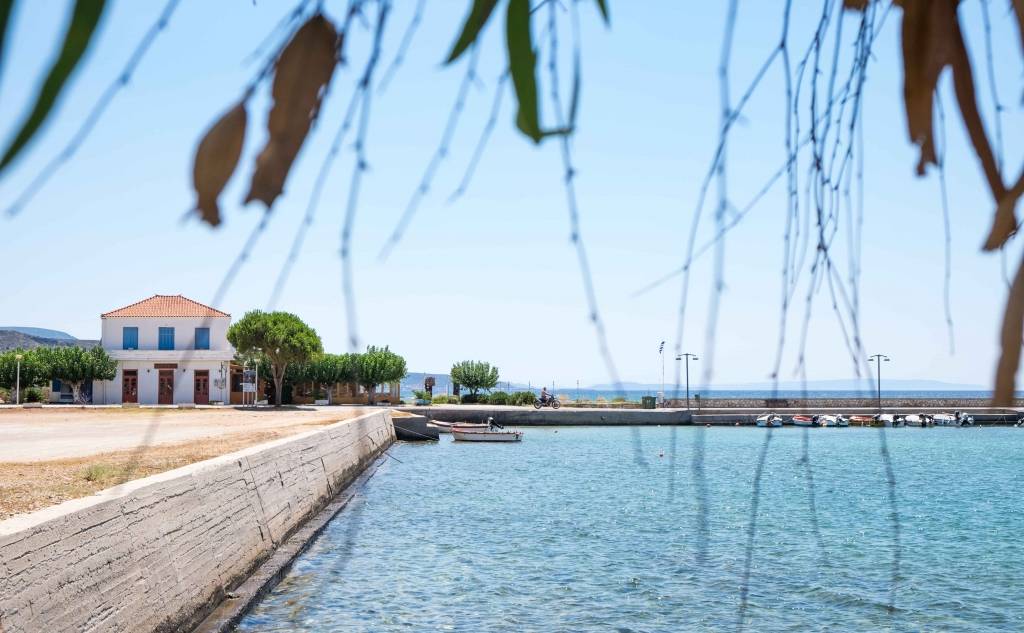






Plytra belongs to the Municipality of Monemvasia. It is a coastal settlement just 4 km from Papadiania and 7 km from Molai. It has about 170 permanent residents. Every summer, various events are organised at Plytra, such as concerts, beach parties, painting exhibitions, etc. The settlement is ideal for those involved in hiking, agritourism and cycling. In fact, the well-known Club of Friends of Cycling "Cycling Company" is located here. In July, if you are at Plytra, don't forget to go to the Equestrian Club Meeting, established in recent years. Fans of horses and horse-riding gather from every corner of Greece at a spectacle full of horses of different races.
In addition to the boats and fishing boats of the residents, the port of the settlement also hosts recreational crafts. At Plytra, visitors can find rooms to rent and hotels for their stay, as well as cafes, taverns and bars for their entertainment.
On Artanis beach, there is a half-demolished building - the oldest house in the settlement. It is the trademark of Plytra. It dates back to the 17th century and belongs to the Venetsanakis family. According to tradition, Theodoros Kolokotronis was hosted in this house when he visited the settlement in order to take captain-Venetsenakis and together go and fight for the liberation of Monemvasia.
At Plytra, in Kokkinies, visitors can visit the sunken city of ancient Asopos, the ruins of which can be seen with the naked eye on the sea bottom and along the coast. The town sank in 365 AD. after a strong earthquake, due to which the separation of the rock of Monemvasia took place. There are two versions of the origin of the name Asopos. The first comes from the hero's name who went to the area with Herakleides, and the second comes from the river that crossed the plain. The second version is more prevalent.
Asopos, which belonged to Eleftherolakones, had a safe port and its own currency with the inscription ASOPEITON. Such a coin is also kept in the Archaeological Museum of Sparta. The time of the founding of the city is lost in the Prehistoric era before the descent of the Dorians. The town flourished during the Roman period until the first Byzantine years. Remains of the Roman city, which was probably erected on the ruins of the ancient town of Asopos, are in the area. In particular, there are ruins of buildings and Roman tombs in the western part of the settlement. In the southeastern region, and a short distance from the sea, the Roman bath apartments, the relics of a small-sized theatre, and parts of walls and floors that probably belong to bathing facilities are preserved in a state of foundation.
There is a large building on the coastline, while in the surrounding area, visitors can see scattered porous architectural members (column bases, tectonic capitals, trunks of ribbed columns). Finally, further north, the remains of a Roman bath with a mosaic floor in three layers are preserved.